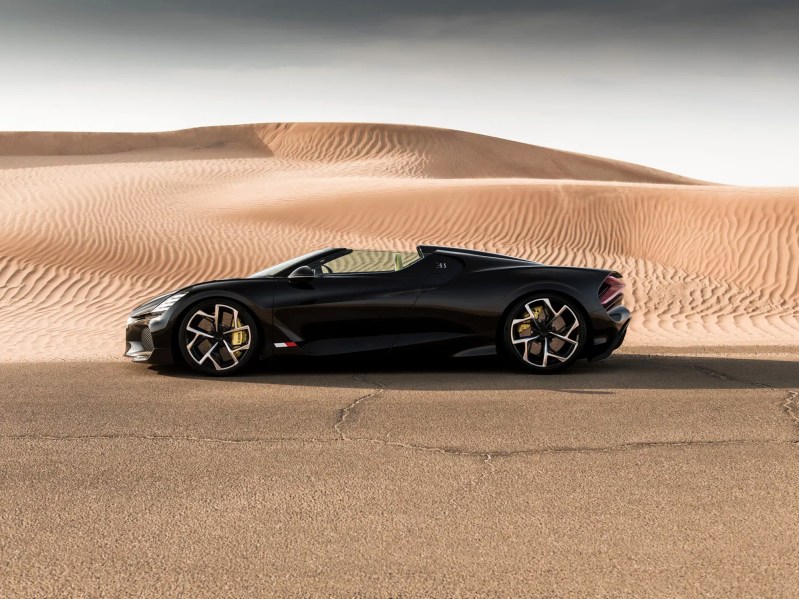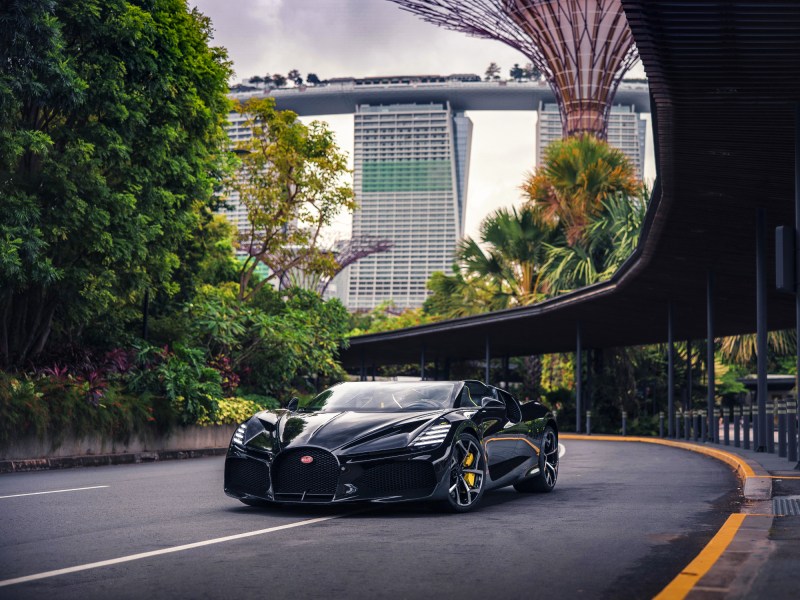
Bugatti hypercars are among the most beautiful, luxurious, expensive, and fastest cars in the world. The W16 Mistral, with its 1,578-hp V16 engine, is Bugatti’s first new convertible since 2012.
Cars this beautiful and with such high levels of engineering and performance often seem otherworldly and out of reach. In reality, the W16 Mistral is not available. Bugatti will build only 99 W16 Mistrals, priced at $5.4 million each. So they’ll be scarce and super expensive, but there’s more. All 99 W16 Mistrals are already spoken for.

Why Bugatti’s W16 Mistral matters if you can’t buy one
When Bugatti refers to the W16 Mistral as the Ultimate Roadster, the company uses both meanings of “ultimate.” For more than 100 years, Bugatti has developed state-of-the-art luxurious, highest-performance open cars. The W16 Mistral is the latest incarnation of the ideal Bugatti has pursued for over a century.
Stated simply as “Form Follows Performance,” every part of the W16 Mistral has to support an open-top vehicle with a top speed of 260 mph.
Bugatti has also stated that the w16 Mistral will be the final Bugatti street model to use the W16 engine. The W16 has powered every Bugatti since the 2005 launch of the Veyron. So the Mistral is not only the supreme Bugatti roadster but also the last Bugatti, roadster or otherwise, that will be powered by the engine that helped define Bugatti hypercars for the past two decades.

What makes the Bugatti W16 Mistral so special
All Bugatti design elements must adhere to a rigorous company philosophy that fuses performance, comfort, safety, dynamics, handling, and driveability. Stated simply as “Form Follows Performance,” every part of the W16 Mistral had to support an open-top vehicle with a top speed of 260 mph.
For example, Bugatti engineers custom-designed the car’s traditional rounded silhouette to meet strict crash and safety regulations. Because heavier weight restricts speed, Mistral’s design team used ultra-high-performance lightweight composite materials and complex structures to minimize mass while simultaneously increasing the chassis’s rigidity.
The same principles apply to the driver and passenger doors that need to absorb tremendous forces of side impacts.

The air scoops behind the headrests have two functions. First, they feed oxygen via ram induction to the Mistral’s hungry W16 engine. Second, they are constructed of a highly rigid, bespoke carbon fiber cable that holds the car’s entire weight if it rolls over or flips.
Many other examples of W16 Mistral structural and design elements enhance the car’s primary role as an open-top hypercar. Still, luxury isn’t forgotten with details such as intricately woven leather door panels. Whimsy also finds a place in the W16 Mistral, certainly in the case of the dancing elephant graphic on the gear shift machined from a block of aluminum.




